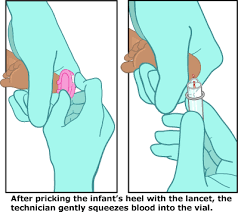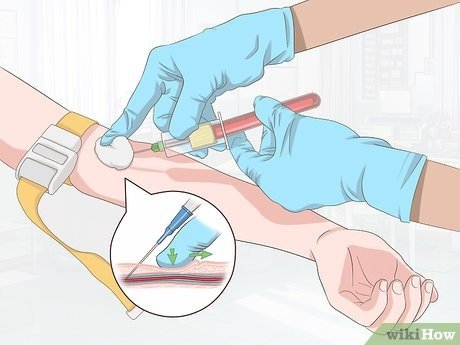A phlebotomist has just confirmed critical values on a laboratory test. Which of the following actions should the phlebotomist take when the physician's office is already closed?
Contact the physician by paging or calling right away.
Leave a message at the physician's office number.
Call the physician's office on the next business day.
Fax the results to the physician's office with a stat fax cover.
The Correct Answer is A
Choice A Reason:
Contacting the physician by paging or calling right away is the most appropriate action when critical values are confirmed on a laboratory test. Critical values are defined as those that indicate the patient is in danger of death unless treatment is initiated immediately. Immediate notification of the responsible licensed caregiver is required so that appropriate clinical action can be taken for the patient. This is a standard procedure compliant with CLIA regulation 493.1109(f) and is essential for patient safety.
Choice B Reason:
Leaving a message at the physician's office number is not an adequate response to confirmed critical values. Messages can be overlooked or not checked until the next business day, which could delay necessary urgent medical interventions.
Choice C Reason:
Calling the physician's office on the next business day is not acceptable when dealing with critical values. The urgency of critical results requires immediate action, and waiting until the next business day could result in significant harm or death to the patient.
Choice D Reason:
Faxing the results to the physician's office with a stat fax cover is not sufficient for immediate communication of critical values. While the fax may indicate urgency, there is no guarantee that the fax will be seen immediately by the physician or their staff. Direct communication through paging or calling ensures that the critical information is relayed without delay.
Nursing Test Bank
Naxlex Comprehensive Predictor Exams
Related Questions
Correct Answer is B
Explanation
Choice A reason:
Performing a heel stick on a 5-year-old patient is not an appropriate technique. Heel sticks are typically used for infants, particularly newborns, to minimize discomfort and because their finger pads may not be fully developed for finger sticks. By the age of 5, a child's veins are usually developed enough for venipuncture, which is the preferred method.
Choice B reason:
Performing a finger stick on a toddler patient is an appropriate technique for specimen collection. This method is commonly used for children who are not yet old enough for venipuncture but have outgrown the heel stick method. The finger stick is performed on the palmar surface of the distal phalanx, usually of the middle or ring finger, and is considered safe and effective for collecting small blood samples in toddlers.
Choice C reason:
Performing a thumb stick on an infant is not an appropriate technique. The thumb has a pulse and is more sensitive, which can cause unnecessary pain and distress to the infant. Additionally, the thumb's size and increased movement make it a less suitable site for specimen collection in infants.
Choice D reason:
Performing a thumb stick on a 5-year-old patient is also not an appropriate technique. As with infants, the thumb's sensitivity and the presence of a pulse make it a less desirable site for blood collection. For a 5-year-old, venipuncture or a finger stick on a non-thumb finger would be more appropriate and less distressing.

Correct Answer is B
Explanation
Choice A reason:
Cleaning the site is a step that should be completed before anchoring the vein. The site should be cleaned with an antiseptic to reduce the risk of infection. Once the vein is anchored, cleaning the site again could displace the vein and compromise the anchoring.
Choice B reason:
After anchoring the vein, the phlebotomist should perform the procedure, which involves inserting the needle into the vein at the appropriate angle. Once the needle is in place and blood is seen in the tubing, the phlebotomist can proceed to collect the necessary amount of blood into the vacutainers or syringe.
Choice C reason:
Examining the needle is not the next step after anchoring the vein. The needle should be examined before the procedure begins to ensure it is the correct size and gauge for the venipuncture and that there are no defects.
Choice D reason:
Reapplying the tourniquet is not necessary at this point in the procedure. The tourniquet should already be in place to engorge the vein, making it easier to anchor and access. Reapplying it could cause discomfort or even disrupt the already anchored vein.

Whether you are a student looking to ace your exams or a practicing nurse seeking to enhance your expertise , our nursing education contents will empower you with the confidence and competence to make a difference in the lives of patients and become a respected leader in the healthcare field.
Visit Naxlex, invest in your future and unlock endless possibilities with our unparalleled nursing education contents today
Report Wrong Answer on the Current Question
Do you disagree with the answer? If yes, what is your expected answer? Explain.
Kindly be descriptive with the issue you are facing.
